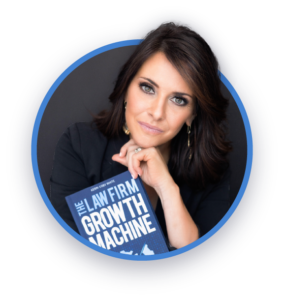The phone rings, a potential client’s voice hesitant on the other end. They’re calling about a legal issue—a car accident, a family dispute, a business conflict—and they’re feeling overwhelmed, uncertain, and vulnerable. This moment, the initial intake call, is far more than just a data-gathering exercise; it’s a pivotal opportunity to make a lasting impression, build trust, and set the stage for a successful attorney-client relationship.
But here’s the catch: Traditional intake processes often miss the mark. They focus on checking boxes, filling out forms, and collecting information, inadvertently reinforcing the client’s sense of anxiety and powerlessness, making them feel like just another case file instead of a valued individual seeking help. This impersonal approach can lead to client hesitation, lost leads, and a missed opportunity to showcase your firm’s empathy, expertise, and commitment to client service.
This is where the power of intake framing comes in.
Intake framing is about shifting the narrative, transforming the intake process from a bureaucratic hurdle into a reassuring and solution-oriented consultation. It’s about using strategic language, empathetic communication, and a client-centered approach to create a sense of confidence, trust, and a clear path forward, letting potential clients know they’ve come to the right place for guidance and support.
This comprehensive guide will explore the art and science of intake framing, providing you with actionable strategies, scripting suggestions, and training techniques to empower your intake team to master this crucial skill, turning anxious callers into confident clients and transforming your intake process into a conversion powerhouse.
Section 1: What is Intake Framing? Shifting the Narrative, Transforming the Experience, Redefining Client Interaction
Intake framing is the art of consciously shaping the client’s perception of the intake process, positioning it as a valuable consultation rather than a mere information-gathering exercise. It’s about setting the tone for a collaborative, solution-oriented conversation, one where the client feels heard, understood, empowered, and confident that their legal needs will be met with compassion and expertise.
- From Form-Filler to Trusted Advisor: Elevating the Intake Specialist’s Role
Traditional intake often relegates the intake specialist to the role of a form-filler, someone who gathers data, checks boxes, and processes paperwork. While these tasks are important, they can inadvertently create a sense of distance and impersonality, making the client feel like just another number in the system.
Intake framing shifts the focus from data collection to human connection. It elevates the intake specialist’s role to that of a trusted advisor, someone who:
- Listens with Empathy: Actively listens to the client’s story, acknowledging their emotions and validating their concerns.
- Offers Guidance and Support: Provides clear explanations, answers questions honestly and transparently, and offers reassurance that their legal needs will be addressed with care and competence.
- Creates a Collaborative Environment: Works in partnership with the client, involving them in the decision-making process and empowering them to take an active role in their legal journey.
- The Psychological Impact of Framing: Creating Confidence, Inspiring Action, Building Trust
Framing, a powerful psychological principle, highlights how the presentation of information influences the way people perceive and respond to it. The same information, presented in different frames, can evoke vastly different emotional responses and lead to drastically different decisions.
Think about a glass of water filled halfway. One person might describe it as “half full,” while another might describe it as “half empty.” Same glass, same amount of water, but two completely different perceptions based on the framing.
By framing the intake process as a consultation, you create a subtle but profound shift in the client’s mindset:
- Reduced Anxiety and Increased Comfort: When clients perceive the intake process as a consultation, they feel less like they’re being interrogated or judged and more like they’re engaging in a helpful and supportive conversation, one where their concerns are taken seriously and their needs are prioritized. This shift reduces anxiety, builds rapport, and creates a more positive and productive interaction.
- Enhanced Trust and Open Communication: Clients are more likely to open up and share sensitive information when they feel like they’re being listened to and understood, not just processed. Intake framing creates a sense of safety and trust, encouraging clients to be more forthcoming about their situation, which, in turn, allows your team to gather the information needed to assess the case effectively and provide accurate guidance.
- Empowerment and Agency: Turning Passivity into Participation: Clients feel more in control of the situation when they perceive the intake process as a collaborative effort to find solutions, not just a recitation of facts. Intake framing empowers clients to take an active role in their legal journey, making them feel like partners in the process, not just passive recipients of legal services. This can lead to greater client satisfaction, increased engagement, and a stronger commitment to working with your firm.
Section 2: Reassuring Clients with Language and Tone – The Power of Words, the Impact of Empathy
The words you choose and the tone you convey can profoundly impact a client’s emotional state and their willingness to engage with your firm. Just as a doctor’s calm demeanor and reassuring words can soothe a patient’s anxiety, the right language and tone during legal intake can transform a potentially stressful experience into a positive and productive one.
- Key Phrases that Build Trust and Confidence: Communicating Expertise, Offering Reassurance
By incorporating specific phrases that convey expertise, empathy, and a genuine desire to help, you can create a sense of confidence and trust from the very beginning of the intake process.
Examples:
- Expertise and Experience: “We have extensive experience handling cases just like yours, and we’re confident in our ability to guide you through this process effectively.” Or, “Our team of attorneys specializes in [practice area] and has a proven track record of success in achieving favorable outcomes for our clients.”
- Empathy and Understanding: “I understand this is a difficult situation, and I want to assure you that we’re here to listen and help you explore your options.” And, “I can hear the concern in your voice, and I want you to know that you’re not alone. We’ve helped many clients facing similar challenges, and we’re committed to providing you with the support and guidance you need.”
- Solution-Oriented Approach: “Our focus is on finding the best possible solutions for your unique situation. We’ll work collaboratively with you to develop a strategy that protects your rights and achieves your desired outcomes.” And another reassuring phrase may be, “Our goal is to not only address your immediate legal needs but also to provide you with the peace of mind that comes from knowing you have a dedicated team of legal professionals on your side.”
- Commitment to Client Service: “We’re committed to providing you with personalized attention, clear communication, and compassionate support throughout this entire process. You’re not just a case to us; you’re a valued client, and your well-being matters.” Another example, “Our team is dedicated to making the legal process as smooth and stress-free as possible for you. We’re here to answer your questions, address your concerns, and guide you every step of the way.”
- Using Empathetic, Problem-Solving Language: Calming Anxiety, Inspiring Hope
Beyond specific phrases, it’s crucial to adopt a problem-solving mindset, framing the intake process as a collaborative effort to understand the client’s needs and find solutions. This involves shifting your language away from a purely information-gathering approach to one that conveys empathy, support, and a commitment to working together to find the best possible path forward.
Example Language:
- Instead of: “Can you tell me what happened? Just the facts, please.”
- Try: “I’d like to hear more about your experience, in your own words, so we can fully understand your situation and how we can best assist you. Take your time; there’s no rush.”
- Instead of: “Do you have any questions? We need to wrap this up soon.”
- Try: “What are your biggest concerns or questions right now? What’s weighing most heavily on your mind? I want to make sure I address all of your concerns before we move forward.”
Section 3: The Four S’s of Intake Framing – A Roadmap for Effective Client Conversations, Turning Calls into Clients
To effectively frame the intake process as a consultation, follow these four essential steps, guiding the client through a seamless and confidence-building experience that sets the stage for a strong and lasting attorney-client relationship.
1. Screen: Identifying the Problem and Needs – Listening Deeply, Understanding Needs, Creating a Connection
Begin by actively listening to the client, allowing them to share their story and express their concerns without interruption or judgment. This is about creating a space where they feel safe, heard, and understood.
Questions that Encourage Open Communication:
- “Can you tell me what brings you to our firm today? What led you to reach out to us?”
- “What are your biggest concerns right now? What’s keeping you up at night?”
- “What are you hoping to achieve through this legal process? What would a successful outcome look like for you?”
Key Goals:
- Demonstrate empathy and understanding, letting clients know you’re not just listening to their words but also hearing their emotions.
- Identify the client’s specific legal needs, gathering the essential information to determine case viability and potential legal strategies.
- Determine whether the case aligns with your firm’s expertise, ensuring that you’re equipped to provide the specialized legal services the client requires.
2. Sell: Communicating the Value of Your Services – Highlighting Expertise, Building Confidence, Demonstrating Value
Once you’ve identified the client’s needs and confirmed that their case aligns with your firm’s expertise, it’s time to clearly communicate the value of your services, highlighting what sets your firm apart and why they should choose you as their legal advocate.
Language that Inspires Confidence and Trust:
- “Our firm specializes in [practice area] and has a proven track record of success in cases similar to yours. We’re confident in our ability to leverage our expertise and resources to achieve the best possible outcome for your case.”
- “We’re committed to providing our clients with personalized attention, aggressive representation, and clear, consistent communication. You’ll always know where your case stands, and you’ll never feel left in the dark.”
- “We understand the complexities of [legal issue] and will work tirelessly to protect your rights, navigate the legal system on your behalf, and fight for the justice you deserve.”
Key Goals:
- Build the client’s confidence in your firm’s capabilities, showcasing your expertise, experience, and dedication to client success.
- Differentiate your firm from competitors, highlighting your unique strengths, values, and approach to client service.
- Create a sense of value and reassurance, letting clients know they’re making a wise decision by choosing your firm.
3. Sign: Getting the Commitment to Move Forward – Securing the Next Step, Building Momentum
Once you’ve established rapport, demonstrated empathy, and communicated the value of your services, it’s time to secure the client’s commitment to move forward with the process. This might involve scheduling a consultation, signing a retainer agreement, or providing necessary documents to initiate the case.
Scripting Suggestions for a Smooth Transition:
- “Based on what you’ve shared, I believe we can help you with this situation. To explore your options in more detail and discuss potential strategies, would you be open to scheduling a consultation with one of our attorneys? It’s a chance for you to ask questions, get personalized legal advice, and determine if our firm is the right fit for you.”
- “To officially get started and allow us to begin working on your case, we’ll need you to sign a retainer agreement. This document outlines the terms of our representation, clarifies our fees and billing process, and ensures we’re both on the same page. We’re happy to answer any questions you have about the agreement before you sign it.”
Key Goals:
- Create a sense of momentum and progress, guiding the client toward taking action and initiating their legal journey.
- Secure the client’s commitment to working with your firm, solidifying the attorney-client relationship.
- Transition smoothly to the next step in the intake process, ensuring a seamless and positive client experience.
4. Schedule: Setting Up the Next Step – Creating a Clear Path Forward, Reducing Uncertainty
Once the client has agreed to move forward, clearly outline the next steps in the process, whether it’s scheduling a consultation, gathering necessary documents, or preparing for a court appearance. This clarity and transparency reduces anxiety, reinforces their decision to work with your firm, and keeps the momentum going.
Example Language:
- After Scheduling a Consultation: “Great, I’ve scheduled your consultation for [date and time]. We’ll send you a confirmation email with all the details, including our office location and directions. In the meantime, you can start gathering any relevant documents, such as [list specific documents]. We’re happy to answer any questions you have before your appointment.”
- After Signing a Retainer Agreement: “Thank you for signing the retainer agreement. This allows us to officially begin working on your case. Our team will be in touch soon to discuss next steps, such as gathering additional information, developing a legal strategy, and outlining a timeline for your case.”
- For Urgent Matters: “Given the urgency of your situation, we’ll expedite the intake process. Please provide us with [essential documents or information], and we’ll begin working on your case immediately. Our team will be in touch within 24 hours to discuss next steps and answer any pressing questions you may have.”
Key Goals:
- Reinforce the client’s decision to work with your firm by demonstrating responsiveness, efficiency, and a commitment to their case.
- Provide clarity and reduce anxiety about the legal process by outlining clear next steps and setting expectations.
- Maintain momentum and ensure a smooth transition to the next stage, keeping the client engaged and confident in their decision to work with your firm.
Section 4: Training Your Intake Team to Master Intake Framing – From Scripts to Mastery, Cultivating Empathy and Skill
Intake framing is a skill that requires practice, feedback, and a commitment to ongoing refinement. It’s not about simply memorizing scripts or following a rigid formula; it’s about developing a deep understanding of the psychological principles behind framing, mastering the art of empathetic communication, and being able to adapt your approach to diverse client personalities and situations.
By providing your intake team with the training and support they need, you can transform them into intake framing experts, optimizing your intake process, enhancing client satisfaction, and building a reputation for compassionate and effective legal services.
- Training Beyond Scripts: Empathy, Authenticity, and Adaptability
While scripts can be helpful starting points, especially for newer team members, it’s crucial to move beyond rote memorization and encourage your team to embrace empathy, authenticity, and adaptability in their client interactions.
Key Training Objectives:
- Understanding the Psychology of Framing – Influence, Perception, and Decision-Making: Explain how framing influences perception, decision-making, and client behavior. Help your team understand how the words they choose and the tone they convey can shape the client’s experience and influence their willingness to engage with your firm.
- Illustrate with Examples: Provide real-world examples of how different framing techniques can lead to different outcomes. For example, compare the impact of framing a legal fee as an “investment” in their future vs. a “cost” of legal services.
- Mastering Empathetic Communication: The Heart of Connection: Train your team in active listening, validation, and using language that conveys empathy and understanding. Emphasize the importance of treating each client as an individual, recognizing their unique needs and emotional state.
- Active Listening Exercises: Engage in listening exercises where team members practice reflecting back emotions, summarizing key points, and asking clarifying questions to demonstrate understanding.
- Empathy Role-Playing: Assign team members different emotional states (e.g., anxiety, anger, sadness) and have them practice responding to client scenarios with empathy and understanding.
- Adapting to Different Client Personalities and Situations – The Art of Flexibility: Equip your team to adjust their approach based on the client’s emotional state, communication style, and specific needs. Not every client will respond to the same approach.
- Personality Assessments: Consider using personality assessments to help team members understand their own communication styles and how to adapt to different personality types.
- Scenario-Based Training: Create a variety of intake scenarios that challenge your team to adapt their framing techniques based on different client profiles, legal issues, and emotional states.
- Role-Playing and Coaching: Bringing Skills to Life, Refining Techniques, Mastering the Art of Connection
Create realistic intake scenarios and have your team practice intake framing techniques in a safe and supportive environment where they can experiment, make mistakes, and receive constructive feedback without the pressure of a real client interaction.
Example Scenarios:
- The Anxious Caller: A potential client calls about a personal injury case, expressing fear and uncertainty about the legal process. How can the intake specialist use framing techniques to calm their anxiety, build trust, and guide them toward scheduling a consultation?
- The Frustrated Business Owner: A business owner contacts your firm about a contract dispute, their voice laced with anger and frustration. How can the intake specialist acknowledge their emotions, validate their experience, and effectively communicate the firm’s ability to help them navigate this complex situation?
- The Grieving Family Member: A family member calls seeking information about estate planning after the loss of a loved one. How can the intake specialist approach this sensitive conversation with compassion and empathy, offering support and guidance during a difficult time?
Coaching Strategies:
- Provide Real-Time Feedback: During role-playing exercises, offer real-time feedback on language choices, tone of voice, and overall approach. This immediate feedback allows team members to adjust their communication in the moment and practice new techniques.
- Record and Review Calls: Record mock intake calls and review them as a team, providing constructive feedback and highlighting areas for improvement. This allows for a more objective analysis of their communication and provides opportunities for learning and growth.
- Peer-to-Peer Learning: Encourage team members to share best practices, challenges, and successful strategies with each other, creating a collaborative learning environment where everyone feels supported and empowered to learn and grow. This fosters a sense of teamwork and shared commitment to providing excellent client service.
The Verdict: Framing for Success – Building Trust, Converting Clients, Elevating Your Firm
Intake framing is more than just a communication technique; it’s a strategic approach to client interaction that can transform your intake process from a bureaucratic hurdle into a powerful tool for building trust, converting leads, and elevating your firm’s reputation for client-centered care.
By training your team to master the art of intake framing, you’re investing in a more empathetic, effective, and ultimately, more successful approach to client engagement. When you frame the intake process as a consultation, you’re not just gathering information; you’re creating a connection, building confidence, and setting the stage for a positive and productive attorney-client relationship that can lead to positive outcomes and lasting client loyalty. Remember, the first call is just the beginning; it’s the foundation upon which you build a relationship of trust, understanding, and shared goals, transforming clients from anxious callers into confident advocates for their own legal journey.










